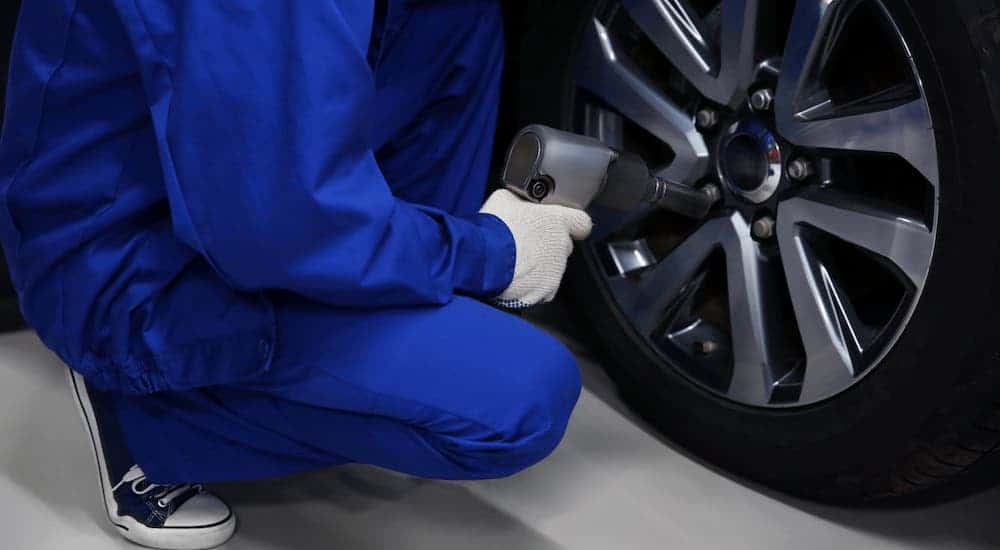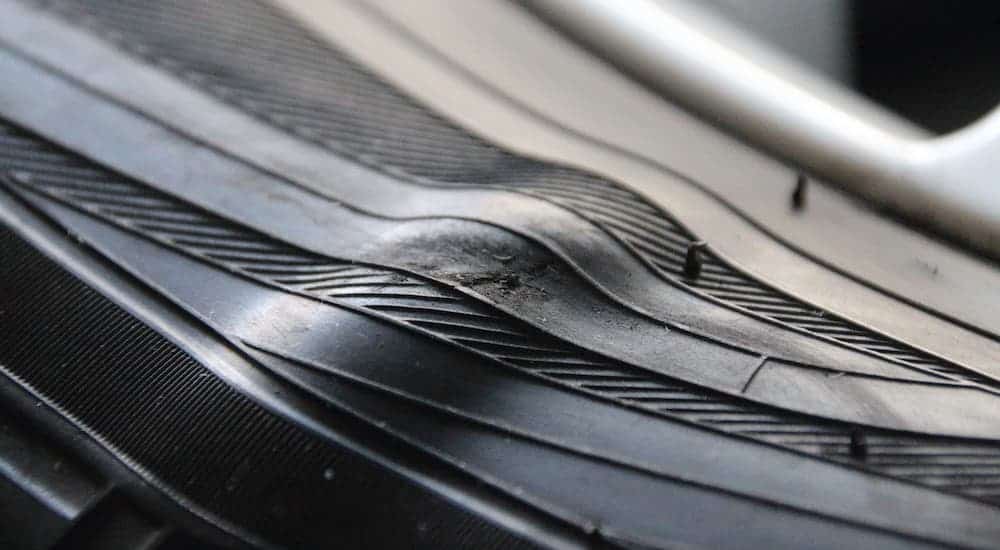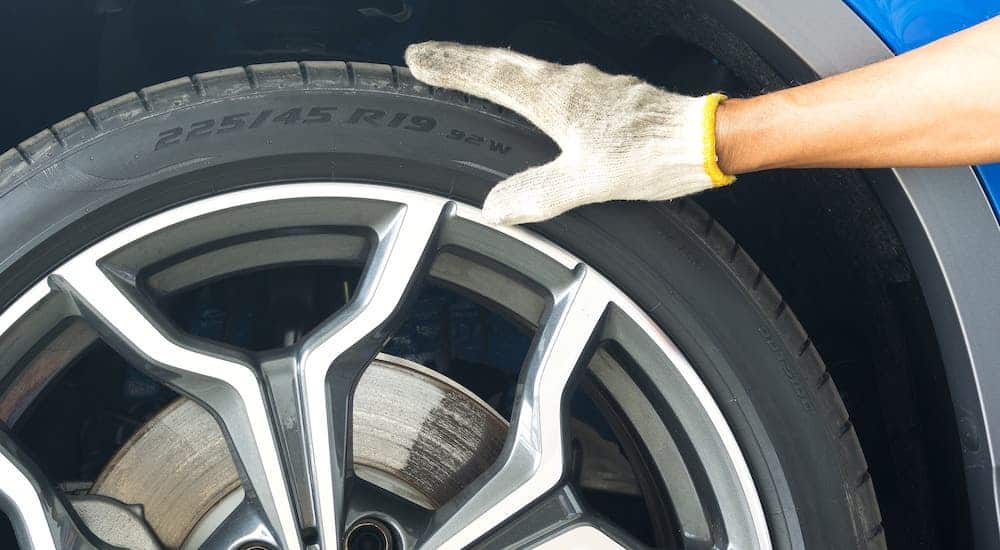Here at Kings Ford Quick Lane, we carry 13 different tire brands in our shop in Cincinnati. Tire service is probably something you don’t want to have to think about or something you may not know a lot about. You’ve probably seen Firestone, Goodyear, and Michelin attached to vehicles, but you may not be as familiar with other brands. If you think you need to replace your current tires, you may be left asking yourself, “What type of tire should I get?” Understanding tires is an art form, and not everyone is well versed in vehicle parts. That’s why our team is here to help with this handy Tire Service guide. Our goal here is to provide you with a better sense of what tire you need.
Tire Classifications
There are a few different types of tires, and each one is useful for different situations. While some names may sound similar, we can assure you that they are not all the same. Let’s break down each tire classification to help you gain a better understanding of the labels.
First up is the all-season tire. These are usually the tires you will get with a new car purchase and are some of the most versatile types of tires you can have. With long tread wear, the all-season tire can provide you with a smooth ride and adequate traction. This type of tire works on both wet and dry roads, which is why so many people prefer it. Also, if you live in an area that sees a lot of fluctuation in weather year-round, the all-season tire is a great option.
Next, we have the all-terrain tire. Don’t get this one confused with the all-season tire. The two were not created equal. The all-terrain tire is generally great for light-duty trucks and SUVs. Offering good traction on paved roads and while off-roading, this type of tire is suitable for most weather conditions, including wet roads. You should also keep in mind that most 4WD SUVs come with all-terrain tires.
Then, we have the summer tire. The summer tire is best suited for warmer climates or the summertime in areas that experience the extremes of all four seasons. Made from soft rubber, they provided the best traction on wet or dry roads in hot weather. However, these tires are made with rubber that does well in the heat, but they are not good for the cold. If you experience winter temperatures in your climate, you will need to change your tires out to something that can handle the temperature drop.
The fourth tire classification is the winter tire. Compatible with any type of vehicle, the winter tire is essentially the opposite of the summer tire. The rubber is tough enough to withstand freezing temperatures, and the tread is designed to provide optimized traction while traveling over ice or snow. If you live in a place that experiences harsh winter months, the winter tire will be your new best friend! However, like the summer tire, winter tires do not do well in the heat. If you experience hot summers, you will need to change these tires out when the temperature warms up.
Finally, there are a couple of specialty types of tires that you can buy. Touring tires are similar to all-season tires, but they tend to have a higher speed rating and are better for vehicles like sports sedans. Finally, you have track and competition tires, which are specifically designed for racing conditions: dry roads and peak performance handling. These tires are not recommended for daily use and are often regulated by the competition series mandate that you are racing under.
4 Signs that You Need New Tires
Now that you know what different types of tires are available, we just have one question for you. Do you know when it’s time to replace your tires? Let’s go over some of the most common signs that your tires need to be replaced.
Most manufacturers recommend that you change your tires every 6 years. However, that might not be economical for some people. If you can’t change your tires as frequently as what is recommended, then we suggest that you at least have a mechanic check your tires regularly. You can also check these four things for signs of wear and tear.
- Check the Tread Depth: To do this, put a penny upside down inside the treads. If you can see Lincoln’s head, that means the treads are worn down too much. You should have them replaced as soon as possible.
- Look for Sidewall Cracks: To do this, you can take a peek at the sidewalls of each tire. Cuts, deformations, and grooves are all indicators that your tire could be leaking or at risk of a blowout. Tires are more likely to gain cracks when exposed to high heat and sunlight for a long period of time.
- Be Mindful of Blisters and Bulges: If you see either of these blemishes on your tires, that is an indication of a weak surface. Bulges indicate an issue with the structure of the tire itself where the air is leaking into the flexible out layer of the tire. If you see bulges in your tires, you should replace them right away.
- Check for Vibrations: Have you noticed a vibrating feeling as you drive? Bad tires can have a direct impact on the vehicle’s steering. Vibrations are hazardous, and you should have your tires checked immediately if you begin to feel rattling when you drive. Vibrations can be caused by either an issue with the tires or with the tire alignment, but either cause will result in damage to your car if left unchecked.
Things to Look for on the Tire’s Sidewall
If you believe your tires are ready to be replaced, you will need to know what type of tire you should get. Luckily, you have all of the information you need on the tire’s sidewall. This is the outer and inner sides of the tire. Here, you will find the tire’s specs, the safety code, the grade, and various icons.
First, the tire specs will include the size of the tire, it’s construction, and its speed rating. Keep in mind that the speed rating determines the average speed a tire can safely maintain over time. A higher rating will indicate better control and handling as well as a shorter life expectancy. Y is the highest rating, and A is the lowest.
Next, the safety code hails from the United States Department of Transportation. This code ensures that the manufacturer has met all of the tire safety standards set in place by the U.S. government. You will also find the tire ID number following the safety code. This will allow you to pinpoint when and where the tire was made.
The grade of the tire refers to the Uniform Tire Quality Grading (UTQG). The tire was put through a series of tests before it went out into the market. The grade indicates tread wear, temperature, and traction limits.
Finally, the numerous icons you will find on your tire’s sidewall will let you know what all the tire can do. Let’s look at the M+S icon as an example. M stands for mud, and S stands for snow. This indicates that the tire in question has met the mud and snow standards set forth by the Rubber Manufacturers Association. This information is helpful to use when determining what type of tires you need to get and how long your tires will last.
Book a Cincinnati Tire Service
While some vehicle services can be performed at home by yourself, we highly encourage you to bring your vehicle in for a service appointment if you feel it’s time to replace the tires. Our certified technicians here at Kings Ford Quick Lane Tire and Auto Center will ensure that your vehicle is fitted with the appropriate tires for your vehicle and climate in a timely manner. We won’t have you sitting in the waiting area all day. You can make an appointment online at your earliest convenience or give us a call during our regular business hours.



